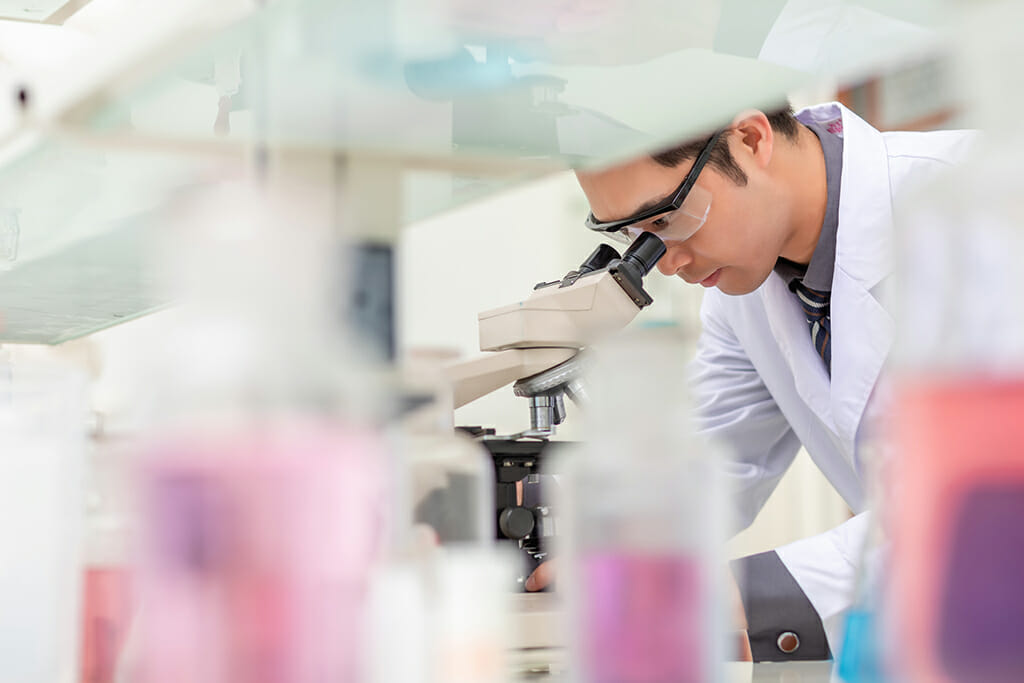

Following a period of steady decline, the pharma industry has experienced an upward trajectory of R&D innovation in the last two years, according to a new report published by Deloitte. The annual study, which has tracked R&D investment returns for the top 15 pharma companies since 2010, examined the returns of companies’ late-stage pipelines, including Phase II and Phase III assets.
“This year’s results are particularly exciting, because we’re seeing the largest increase in returns since we started this report back in 2010,” said Sonal Shah, life sciences research leader at the Deloitte Center for Health Solutions. Returns spiked from 2.7% in 2020 to 7% in 2021. Much of that increase was spurred by COVID-19 vaccines and therapeutics that entered the pipeline in 2020.
But even when the researchers excluded COVID-19 assets from the analysis, they still saw an increase in returns, from 2.5% in 2020 to 3.2% in 2021. That suggests the impact of the increase extends beyond the pandemic. “While that might not seem like a huge change, it’s still reflective of a lot of investment that companies have been making to make clinical trials more efficient,” Shah explained. She pointed to the continued rise of digital technology and using data science to better design clinical trials as factors spurring growth and change.
Shah also noted that pharma companies have learned from their success in quickly developing COVID-19 therapeutics, vaccines and diagnostics. “Companies invested in drug development activities to happen parallel instead of sequentially, so they were able to get answers faster,” Shah noted. “They also thought about streamlining protocols and asking the key scientific questions in clinical trials, as opposed to looking at a lot of different endpoints out of scientific curiosity. There was a ton of collaboration within the industry, with government and with regulators, and that was critical in helping companies move things faster.”
The factors contributing to the overall decline in years prior included the increasing complexity of R&D, Shah said. More companies have moved away from traditional small molecules and toward biologics and targeted medicines, which can lead to more complicated clinical trial designs.
“There’s an increasing burden of proof on companies, both for regulatory and reimbursement,” Shah said. “That means companies are looking at endpoints to improve safety and efficacy, but are also looking at endpoints that matter to payers to try and get competitive positioning and pricing for their products. That added complexity to clinical trials can make them take longer and cost more, and it reduces the return you’re able to see once the product is commercialized.”
Shah expects to see the upward trend continue through 2022 and beyond, though the extent of growth will depend on continued investment into making the drug development process more efficient. “We’re seeing companies spending more on R&D, but doing it more efficiently and investing in areas of high unmet need,” Shah added. “The question is now whether companies will be able to leverage all of these approaches and sustain the momentum they’ve been able to carry through the pandemic and apply that more broadly across their portfolios.”
more recommended stories
 Urine-Based microRNA Aging Clock Predicts Biological Age
Urine-Based microRNA Aging Clock Predicts Biological AgeKey Takeaways (Quick Summary) Researchers developed.
 Circadian Control of Neutrophils in Myocardial Infarction
Circadian Control of Neutrophils in Myocardial InfarctionKey Takeaways for HCPs Neutrophil activity.
 E-Cigarette Use and Heart Attack Risk in Former Smokers
E-Cigarette Use and Heart Attack Risk in Former SmokersKey Takeaways for Clinicians and Nurses.
 36-Week Pre-eclampsia Screening May Reduce Term Risk
36-Week Pre-eclampsia Screening May Reduce Term RiskA New Preventive Strategy for Term.
 Cardiovascular Risk and Sudden Cardiac Death in Diabetes
Cardiovascular Risk and Sudden Cardiac Death in DiabetesRising Sudden Cardiac Death (SCD) Risk.
 Poor Kidney Function and Alzheimer’s Biomarkers Explained
Poor Kidney Function and Alzheimer’s Biomarkers ExplainedPoor kidney function may influence levels.
 Walking Speed Before Hip Replacement Predicts Recovery
Walking Speed Before Hip Replacement Predicts RecoveryNew Evidence Points to a Simple,.
 Neuroblastoma Drug Combo Extends Survival in Models
Neuroblastoma Drug Combo Extends Survival in ModelsA Promising Shift in High-Risk Neuroblastoma.
 How Soybean Oil Impacts Weight Gain and Metabolism
How Soybean Oil Impacts Weight Gain and MetabolismWhy Soybean Oil May Affect Metabolism.
 Coffee and Cognitive Function: Evidence Review
Coffee and Cognitive Function: Evidence ReviewA new narrative review in Cureus.

Leave a Comment